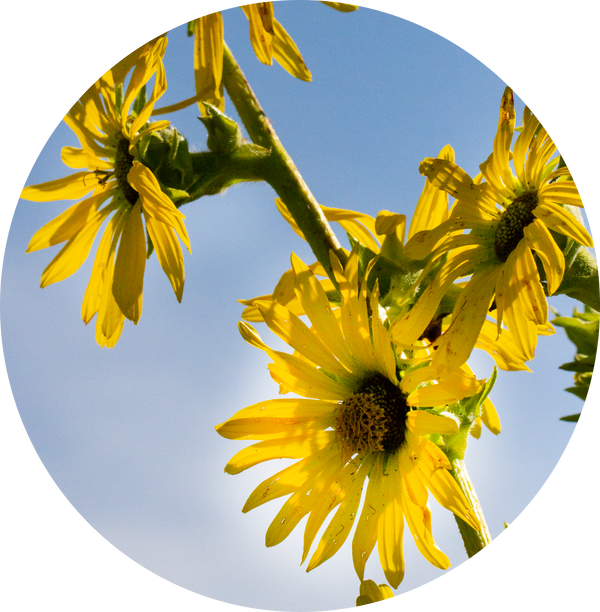
We all have phobias, mine centers around spiders. But, they fascinate me, especially the orb weavers, so what better topic to dive into for Halloween. One of the most commonly encountered species in the Midwest is the yellow garden spider. The females are significantly larger than the males for a pretty creepy reason.

There is a significant size difference between male and female orb weavers. Female orb weavers cannibalize the male after mating, if he's lucky enough to not be eaten beforehand. Smaller males are more successful at sneaking up on females than larger males. Hence, selective pressure is placed on a small size for males. Most of the time the size difference is much greater than depicted in this photo of banded garden spiders.

Orbweavers get their name from the orbital structure of their web, which resembles a wagon wheel. Orbweavers, such as this female redfemured spotted orbweaver, eat the previous day's web and spin a new silk web each day.

To start a web, orbweavers create a sac-like structure out of silk, then send it into the wind with a strand of silk, like a kite. Once that kite sticks to a leaf, branch, or other suitable pinning structure, the spider repeats this process until it has seven suitable attachment points that will support the remaining web structures.

Spiders, such as this banded orbweaver, build silk using a water soluble liquid that becomes a solid, non-water soluble thread. This transformation happens as the spider pulls on the thread, which realigns and changes the thread's molecular structure.


Typically, only female orbweavers spin orbital webs; males hunt on the run. Orbweaver webs contain what is called a stabilimentum towards the center of the web. Larger females tend to make a white zigzag patterned stabilimentum (pic 1). Younger females may make a circular shaped stabilimentum (pic 2). It's unknown exactly why the spiders make a stabilimentum. Some hypothesize that it is a place for young spiders to hide when exposed in the center of the web. Others believe it may serve as a visual cue for birds so they don't fly through, and destroy, the web. It's also speculated that it may serve a structural purpose.

(Shamrock orbweaver)
Anyone who has had the pleasure of walking into a spider web can attest to the fact that spider silk can be tough and elastic. When compared in equal amounts, spider silk has more tensile strength than steel and has more elasticity than rubber. Research on potential human uses of spider silk (a biomaterial) include use in bullet proof clothing and for the surgical repair of ligaments, tendons, and internal organs. Traditionally, spider silk has been used to construct fish nets, rope, and other tools.

Spiders play a critical role in ecosystems as voracious predators. Research on spider populations in cropfields of cotton, alfalfa, soybean, gaur, rice, grain sorghum, peanut, corn, and sugarcane indicate that spiders also serve an important role as a biocontrol for crop pests. Orbweavers accounted for over 20% of the spiders in some of those studies. The presence of spiders also influences habitat restoration in prairies and savannas because their presence influences grasshopper feeding behavior on plants.
Not all orbweavers have a large, round abdomin. Some have strange, spikey abdomins, such as this starbellied orbweaver.

Spiders are front and center in Halloween folklore and what better representative than this pumpkin-orange marbled orbweaver. One myth postulates that a witch is nearby if a spider is present. Another myth states that the spirit of a loved one will visit in the form of a spider on Halloween.
#MidwestWildernessConnections #NaturePhotography #photography #naturelovers #naturelover #hiking #photographylovers #midwestmoment #naturephoto #wildernessculture #naturephotographer #travel #photograph #travelphotographer #landscape_lovers #wanderlusting #hikingadventures #mytravelgram #photographylover #naturepics #landscapephotographer #landscape_captures #photographers_prism #arachnids #spiders #halloween #wildlifephoto #folklore #midwest#biocontrol #halloween











